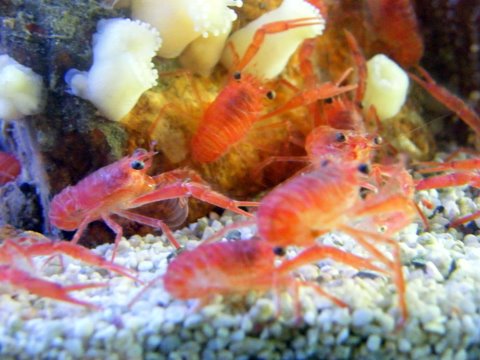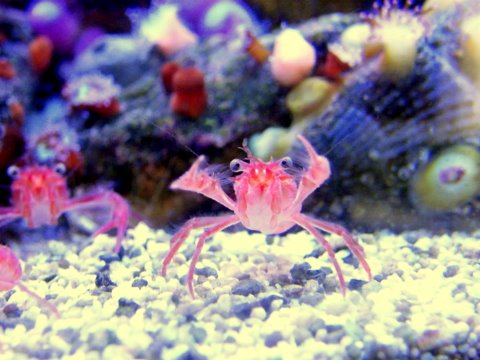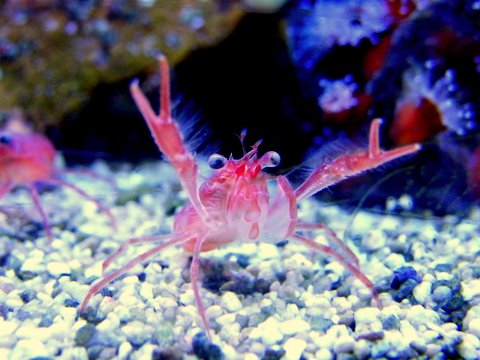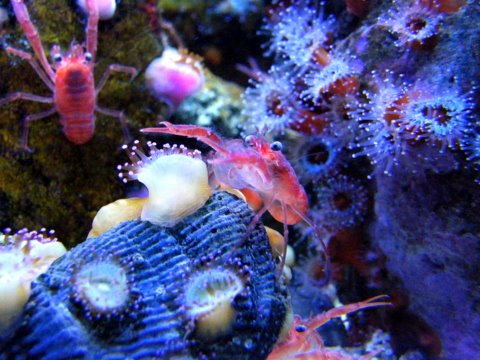15 degrees Celsius equals 59 degrees Fanerheit. You would have to have an oversized chiller and spend a small fortune on electricity to keep a tank that cool.Wow, very impressive. I, too, would like to know more about the tank. And more pictures. Love them!
Check out this cold marine reef tank
- Thread starter coldmarine007
- Start date
Compared to a reef tank, I think that's a bit of a myth. Most cold water animals do not use light to make food the way that reef animals so, so big expensive powerful lights, that use lots of electricity, are not necessary. Reef bulbs are also expensive, and need to be replaced regularly, so all in all, cost per month is comparable with a reef tank.15 degrees Celsius equals 59 degrees Fanerheit. You would have to have an oversized chiller and spend a small fortune on electricity to keep a tank that cool.
Also there are a lot of things you can do to keep heat out of your cold tank, so that the chiller will run much less often:
1) Insulate the bottom, back, and maybe sides of the tank with Styrofoam insulation board.
2) Use external pumps (air cooled) instead of submersible ones.
3) Design your system with the minimum amount of tank surface area (sq in) per gallon. A cube tank is better than a long flat tank, and an all-in-one type tank is better than a tank with a separate sump.
4) Give your chiller access to lots of cool room air (not enclosed in a stand)
5) Keep dust from building up on the radiator of your chiller.
6) Attach a 2nd pane of glass to the uninsulated front and side(s) of your tank, with an air space in between (big help).
I did all of these things, and my 70 gallon bimac octopus tank (60 degrees F) has not painfully increased my electric bill.
Do you have pictures of your tank?Compared to a reef tank, I think that's a bit of a myth. Most cold water animals do not use light to make food the way that reef animals so, so big expensive powerful lights, that use lots of electricity, are not necessary. Reef bulbs are also expensive, and need to be replaced regularly, so all in all, cost per month is comparable with a reef tank.
Also there are a lot of things you can do to keep heat out of your cold tank, so that the chiller will run much less often:
1) Insulate the bottom, back, and maybe sides of the tank with Styrofoam insulation board.
2) Use external pumps (air cooled) instead of submersible ones.
3) Design your system with the minimum amount of tank surface area (sq in) per gallon. A cube tank is better than a long flat tank, and an all-in-one type tank is better than a tank with a separate sump.
4) Give your chiller access to lots of cool room air (not enclosed in a stand)
5) Keep dust from building up on the radiator of your chiller.
6) Attach a 2nd pane of glass to the uninsulated front and side(s) of your tank, with an air space in between (big help).
I did all of these things, and my 70 gallon bimac octopus tank (60 degrees F) has not painfully increased my electric bill.
I posted a thread about my tank a few months ago. Here's the link
Those pictures were taken before I added the 2nd pane of glass to make the two open sides "double paned".
Those pictures were taken before I added the 2nd pane of glass to make the two open sides "double paned".
sorry...... have been away on business for a couple of months....will reply to all enquiries and start posting again in early december.
Whale Krill in the temperate marine tank.
I'm back online again after a longish break. The harbour is full of whale krill at the moment,(known locally as "Munida")...Difficult to photograph as they're always on the move..They gradually die-off and are eaten by the corallimorphs and anemones...great natural food!




I'm back online again after a longish break. The harbour is full of whale krill at the moment,(known locally as "Munida")...Difficult to photograph as they're always on the move..They gradually die-off and are eaten by the corallimorphs and anemones...great natural food!









